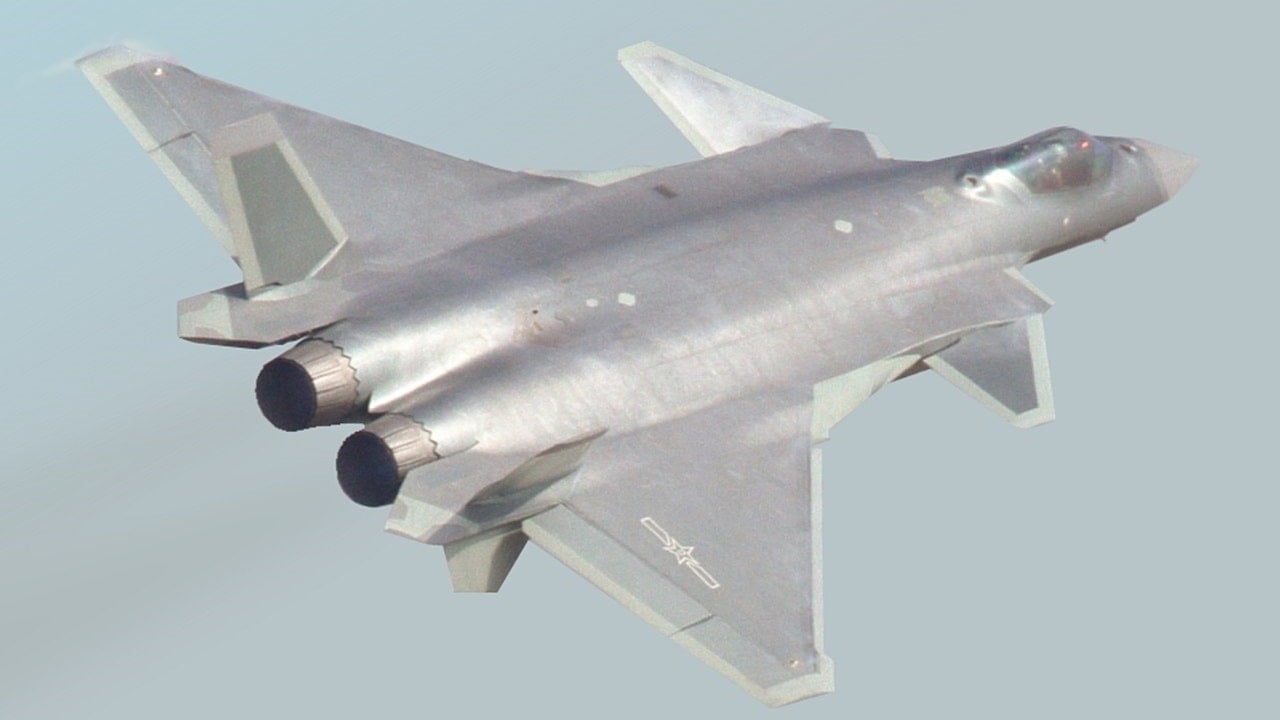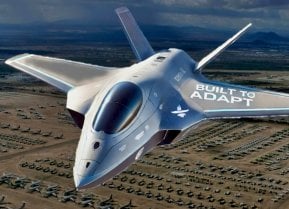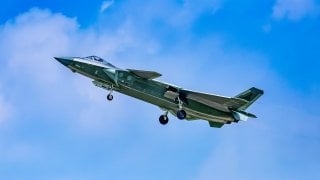China's J-20 Fighter Was Built with 1 Enemy Plane In Mind
The Chengdu J-20 “Mighty Dragon” is China’s answer to America’s fifth-generation warplane, the F-22 Raptor. The Mighty Dragon has evolved from a cheap knockoff (that may or may not have been heavily influenced by the failed Soviet MiG-1.44 warplane) into a true challenger to America’s F-22.
Of course, the F-22 is the pinnacle of manned military aviation. But the planes are a rare commodity in America’s arsenal, whereas the Chinese can continuously mass-produce their J-20, perfecting it with each iteration.
The J-20 began its existence using Russian-built engines. When China traded away the more advanced Russian engines for lesser Chinese models, the plane languished with unreliable engines – until the Chinese finally engineered their own advanced engine for the bird.
Mass Production Extravaganza
The Shenyang WS-15 engine is capable of supercruise, greatly increasing the J-20’s combat range, speed, and maneuverability. The J-20’s performance may rival the performance of the F-22 in key areas, and the People’s Liberation Army Air Force is deeply committed to the plane’s continual evolution.
China has surpassed the Americans in production of its fifth-generation fighter. The U.S. Air Force is stuck with only 186 operational F-22 airframes, according to Harrison Kass.
Aadil Brar of Newsweek reported that U.S. intelligence assesses China possesses “as many as 250 [J-20s] in service” today. That number will grow.
America Gets Its You Know What Kicked by China in Wargames
Every wargame scenario that the U.S. military and its attendant think tanks have conducted outlining a conflict with China shows how, once introduced into combat, even a handful of F-22s fundamentally change the dynamic of the air war portion of any engagement between the U.S. and Chinese militaries in America’s favor.
Indeed, the F-22 is so advanced that a handful of these units had an astonishing 108-to-zero kill ratio against fourth-generation warplanes in Exercise Northern Edge 2006.
But that was against fourth-generation birds, during an exercise, in a relatively uncontested environment. Any real-world fight with China will likely be fought much closer to Chinese shores. The airspace closest to China is packed. What’s more, any U.S. engagement would likely feature a wave of Chinese anti-access/area-denial (A2/AD) attacks on the airbases that house American F-22s assigned to the region. They’d also be fighting in a significantly degraded electronic environment.
Once airborne, the F-22s would not just be made to contend with China’s fourth-generation birds, but the J-20 as well. That’s not even mentioning the robust anti-aircraft weapons that China has dotting the region. Even the F-22, with its exquisite technological advantages, its potent engines, and superior kill ratio would find itself overwhelmed by China’s numerically superior J-20 fleet.
America’s military underestimates the J-20, and they underestimate China’s growing military potency, to its own detriment.

Author Experience and Expertise: Brandon J. Weichert
Brandon J. Weichert, a National Interest national security analyst, is a former Congressional staffer and geopolitical analyst who is a contributor at The Washington Times, the Asia Times, and The-Pipeline. He is the author of Winning Space: How America Remains a Superpower, Biohacked: China’s Race to Control Life, and The Shadow War: Iran’s Quest for Supremacy. His next book, A Disaster of Our Own Making: How the West Lost Ukraine, is due October 22 from Encounter Books. Weichert can be followed via Twitter @WeTheBrandon.
All images are Creative Commons or Shutterstock.
From the Vault
Russia Freaked Out: Why the U.S. Navy 'Unretired' the Iowa-Class Battleships
Battleship vs. Battlecruiser: Iowa-Class vs. Russia's Kirov-Class (Who Wins?)


